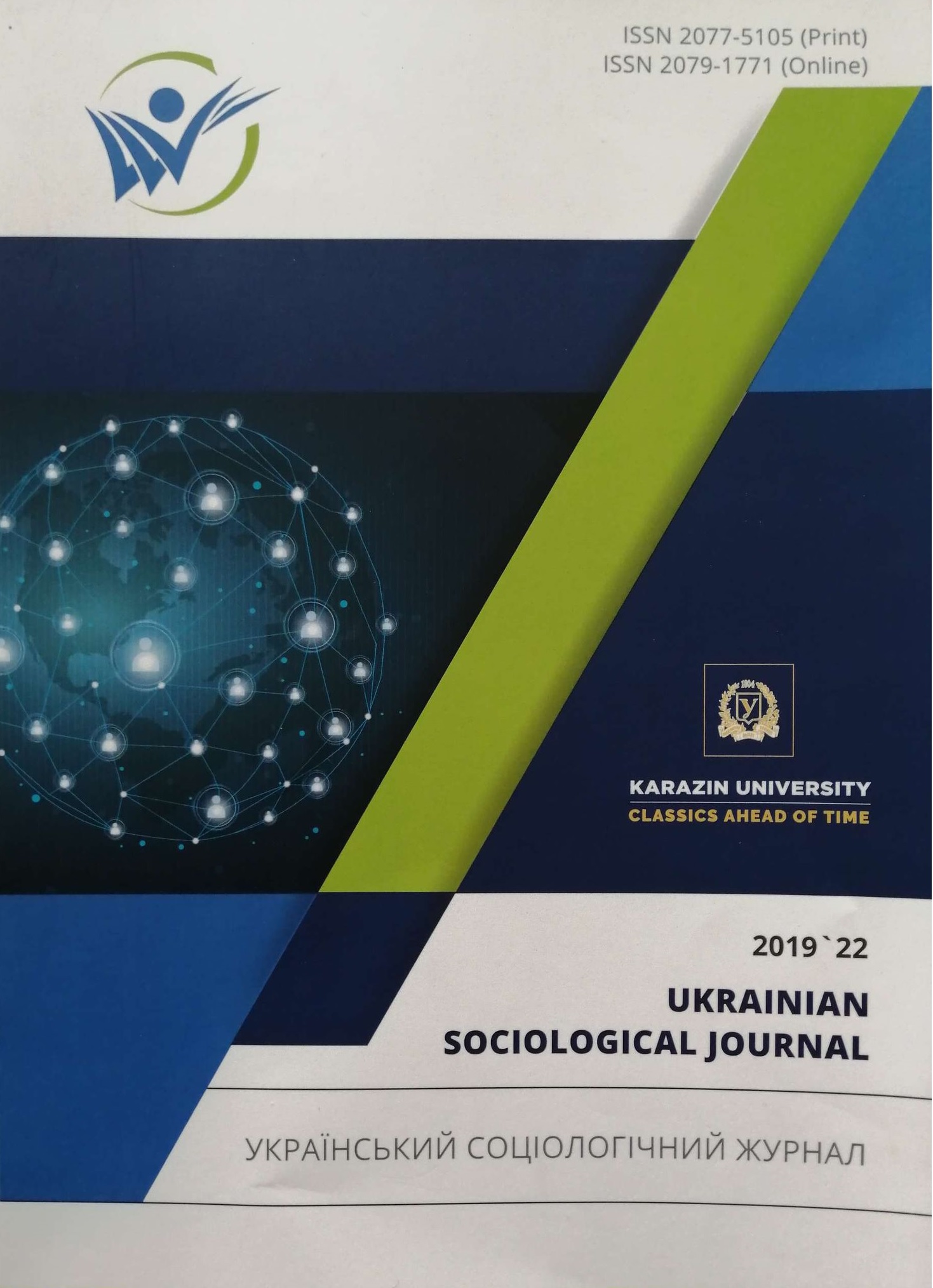Social Capital of Ukrainian Migrant Communities: Theoretization and Empirical Research Experience
Abstract
The article is dedicated to less studied aspect of external migration namely to the formation and functioning of migrant communities in host countries. The expediency of using the theory of social capital and the theory of migration networks as a theoretical and methodological basis for the study of migrant communities is substantiated. The developments of R. Park, J. Coleman, A. Portes are analyzed and the basic operational parameters of the social capital of migrant communities are constructed. The parameters of the functioning and transformation of social capital are analyzed in a two-dimensional space of autonomy and efficiency. The classification of migrant communities by type of social capital is proposed. The following types of communities are identified: 1) a low-efficient, highly autonomous community; 2) highly efficient highly autonomous; 3) a highly efficient and low-autonomous community. The article discusses the results of an expert survey of representatives of communities of Ukrainian migrants in the EU countries on the transformation of the social capital of these communities. The social capital of migrant communities of Ukrainians is “culturally bonding”, aimed at preserving the common cultural identity of Ukrainians abroad in the context of a different cultural environment. Migrant communities of Ukrainian migrants remain relatively homogeneous in terms of culture, identity and practices. It is revealed that in the context of contemporary transformations of external migration, changes and social capital of migrant communities is changing too. The circular nature of migration at the present stage adversely affects the social capital of migrant communities, their permanent membership is diminished, social ties are weakened, the autonomy of communities is reduced and the integration of migrants into host societies is increased. Number of such communities today are to some extent deinstitutionalized.
Downloads
References
Парк Р. Э. Организация сообщества и романтический характер. Социологическое обозрение. 2002. Т. 2. N 3. С. 13-18.
Coleman J. Social Capital in the Creation of Human Capital. The American Journal of Sociology, 1988. Vol. 94. Pp. 95-120.
Gans H. Second Generation Decline: Scenarios for the Economic and Ethnic Futures of the Post – 1965. American Immigrants, Ethnic and Racial Studies, 1992. Vol. 15(2). Pp. 173-192.
Granovetter M. S. The Strength of Weak Ties. The American Journal of Sociology, 1973. Vol. 78, No. 6, pp. 1360-1380.
Lancee B. Immigrant Performance in the Labour Market: Bonding and Bridging Social Capital. Series: IMISCOE Research. Amsterdam University Press, 2012. 192 p.
Loury G. A dynamic theory of racial income differences. Women, minorities, and employment discrimination. Edited by P. A. Wallace, A. M. La Mond. Lexington: Heath, 1977. Pp. 153-86.
Massey D.S., Reichert J. History and Trends in U.S. Bound Migration from a Mexican Town. International Migration Review, 1980. Vol. 14 (4). Pp. 475-491.
Park R. (1928) Human Migration and the Marginal Man. American Journal of Sociology. Vol. 33. Pp. 881-893.
Portes A., Sensenbrenner J. Embeddedness and immigration: Notes on the social determinants of economic action. American Journal of Sociology, 1993. Vol. 98. Pp. 1320-1350.
Portes A., Landolt P. Unsolved Mysteries: The Tocqueville Files II: The Downside of Social Capital. The American Prospect, 1996. Vol. 26. Pp. 18-21.




